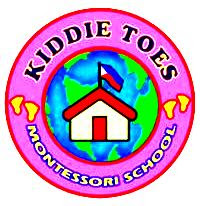
At KTMS Elementary, we use the Project Approach to teach our learners about topics. This approach proved to be most effective especially in making them truly understand their lessons.
We will be posting articles about project approach, so you, the parents, guardians and caretakers can also understand.
==========================
from:
http://circleofinclusion.org/english/approaches/project.html
The Project Approach
A project is an in-depth investigation of a topic. This topic is one that involves children's attention and energy. Projects involve children in conducting research on events worth learning about in their own environments. The teacher selects the topic of study based on the children's and his/her interest, curriculum, and availability of local resources. A topic "web" is then organized by the teacher as a structure to guide the project.
While gathering information on the chosen topic, children have the opportunity to ask questions, to generate theories and predictions concerning possible answers, to seek answers to their questions, to interview experts and others from whom relevant information can be obtained, and to engage in other activities involved in collecting information.
Projects, like good stories, have a beginning, a middle, and an end. This structure helps the teacher to organize the progression of activities according to the development of the children's interests and personal involvement with the topic of study.
Phase 1: Beginning the Project
The teacher discusses the topic with the children to find out the experiences they have had and what they already know. The children represent their experiences and show their understanding of the concepts involved in explaining them. The teacher helps the children develop questions their investigation will answer. A letter about the study is sent home to parents. The teacher encourages the parents to talk with their children about the topic and to share any relevant special expertise.
Phase 2: Developing the Project
Opportunities for the children to do field work and speak to experts are arranged. The teacher provides resources to help the children with their investigations; real objects, books, and other research materials are gathered. The teacher suggests ways for children to carry out a variety of investigations. Each child is involved in representing what he or she is learning, and each child can work at his or her own level in terms of basic skills, constructions, drawing, music, and dramatic play. The teacher enables the children to be aware of all the different work being done through class or group discussion and display. The topic web designed earlier provides a shorthand means of documenting the progress of the project.
Phase 3: Concluding the Project
The teacher arranges a culminating event through which the children share with others what they have learned. The children can be helped to tell the story of their project to others by featuring its highlights for other classes, the principal, and the parents. The teacher helps the children to select material to share and, in so doing, involves them purposefully in reviewing and evaluating the whole project. The teacher also offers the children imaginative ways of personalizing their new knowledge through art, stories, and drama. Finally, the teacher uses children's ideas and interests to make a meaningful transition between the project being concluded and the topic of study in the next project.
Resources:
Web sites:
ERIC Digest: The Project Approach
The Project Approach (ERIC/EECE)
The Project Approach
Books:
Title: The Project Approach: A Practical Guide for Teachers
Author: Sylvia C. Chard
Date: 1992
Publisher: Edmonton, Alberta: University of Alberta Printing Services
Title: The Hundred Languages of Children: The Reggio Emilia Approach to Early Childhood Education
Author: C. L. Edwards, L. Gandini, & G. Forman (Eds.)
Date: 1993
Publisher: Norwood, NJ: Ablex
ISBN: ED 355 034
Title: Engaging Children's Minds: The Project Approach
Author: L. G. Katz & S. C. Chard (Eds.)
Date: 1989
Publisher: Norwood, NJ: Ablex
Copyright © 2002, University of Kansas, Circle of Inclusion Project. Permission for reproduction of these materials for non-profit use with proper citation is granted. Please send your comments and questions to questions@circleofinclusion.org


No comments:
Post a Comment